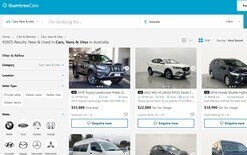‘Forward looking’ safety vision

Ancap and its European counterpart have released their vision to 2030 by establishing the future focus for vehicle safety in their new-vehicle markets.
Key aspects being incorporated into existing Ancap and Euro NCAP ratings through to eight years’ time include:
• Passive safety tests that give greater focus to gender equality, and the ageing population of drivers and occupants.
• Active safety tests that more closely simulate real road environments and examine human-machine interface design.
• Testing and assessing assisted and automated driving systems.
• The testing and assessment of V2V, V2I and V2X communication.
• Fire risk and thermal runaway in electric vehicles.
• Driver impairment and cognitive distraction.
• Cyber security and over-the-air updates.
Reflecting the technology shift to accommodate and encourage assisted and automated driving, the four key areas of Ancap assessment – in place since 2018 – will also be adjusted to reflect the four phases of potential collisions. These are safe driving, crash avoidance, crash protection and post-crash safety.
This change will take effect from 2026 with ANCAP and Euro NCAP moving to a three-year protocol update cycle.
They will also explore expansion into assessing additional vehicle types, such as the active safety capability of motorcycles, motor scooters and heavy goods vehicles.
“This is a milestone for vehicle safety,” says Ancap’s chief executive, Carla Hoorweg. “From our beginning in the 1990s, it was our aim to encourage improvements and that pursuit continues.
“The release of the 2030 future view establishes key testing and assessment focus areas for the industry – both for existing stakeholders and for a new cohort of industry stakeholders that have not previously engaged in the NCAP process.
“The move to explore assessment of medium and heavy trucks is a notable shift and seeks to address the over-representation of these vehicles in road fatalities and serious injuries.
“For our existing star-rating programme, the shift in our assessment pillars acknowledges the important role assisted and automated technologies will play in reducing road-related fatalities and serious injuries among light vehicles.”
Euro NCAP’s secretary-general, Michiel van Ratingen, adds: “In support of Vision Zero, Ancap and Euro NCAP’s non-regulatory influence continues to hold the potential for further improvements in vehicle safety throughout the next decade.
“By developing timely voluntary standards for advanced safety technology, we can act as a catalyst for accelerating uptake and promoting best practice – not just for passenger cars, but also in the commercial fleet.”
Hoorweg, pictured, adds: “Significant safety improvements have entered the Australian, New Zealand and European markets over the past three decades as a result of Ancap’s and Euro NCAP’s drive to address vehicle safety-related challenges among the light fleet.
“What we’re working towards now through this future plan is to acknowledge the changing mobility landscape, and the roles ANCAP and Euro NCAP can play in further improving vehicle safety over the coming decade.
“The New Zealand and Australian governments are targeting zero road fatalities and serious injuries by 2050. We will play a key role in ensuring today’s vehicles are equipped to deliver on this.
“The industry continues to innovate and is already delivering systems that go beyond current regulatory requirements. By setting timely voluntary standards for advanced safety features and technologies, Ancap continues to be the catalyst for accelerating uptake and promoting best practice.”
A PDF of Ancap Future View on Testing & Assessment 2030 can be downloaded here.





